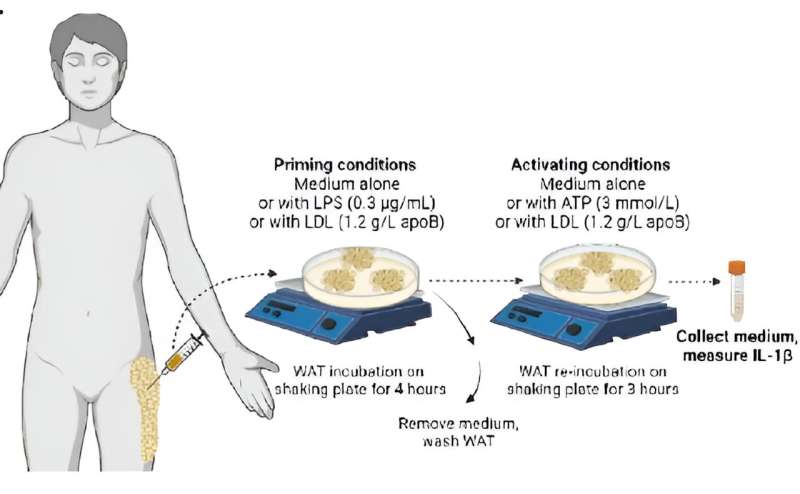Cardiovascular
Interventions that reduce inflammation may reduce incidence of type 2 diabetes, cardiovascular disease
Canadian scientists have established for the first time a new mechanism and role for LDL in the development of type 2 diabetes, beyond its traditional role in the development of cardiovascular disease in humans.
Announced today for World Diabetes Day, the work was carried out by Université de Montréal professor May Faraj, director of the nutrition, lipoproteins and cardiometabolic diseases research unit at the Montreal Clinical Research Institute.
Her study, titled “Native low-density lipoproteins are priming signals of the NLRP3 inflammasome/interleukin1β pathway in human adipose tissue and macrophages,” is published in Scientific Reports.
Faraj’s research suggests that targeting subjects with high LDL using interventions that reduce inflammation may reduce the incidence of type 2 diabetes as well as that of cardiovascular disease, thus achieving two important goals in one single approach.
Elevated numbers of particles that carry “bad cholesterol” in the blood (LDL) are known to promote the development of cardiovascular disease. Clinical evidence—first uncovered in Faraj’s laboratory 15 years ago and since confirmed in large epidemiological studies—indicate that elevated numbers of LDL also promote the development of type 2 diabetes in humans.
Until now, however, mechanisms linking LDL to the risk of type 2 diabetes weren’t well understood.
Forty volunteers recruited
To explore these mechanisms, Faraj’s team recruited 40 healthy volunteers between 2013 and 2019 to participate in a study at IRCM that combined clinical with fundamental research. The team separated the 40 participants into two groups: one with low LDL and the other with high LDL.
The scientists characterized and compared the two groups for inflammatory responses, carbohydrate metabolism and fat metabolism in their fat tissue and in their whole body. They also isolated the subjects’ LDL, fat tissue and immune cells and examined the direct effects of LDL on the inflammatory responses in culture.
They found that:
- subjects with high LDL have higher inflammatory responses in their fat tissue than subjects with low LDL.
- the upregulated inflammatory responses in the fat tissue of subjects with high LDL only were associated with abnormalities in carbohydrate and fat metabolism in their fat tissue and body.
- over time, these metabolic abnormalities are known to promote the development of T2D if not treated.
- lastly, in culture, LDL was able to reproduce the activation of inflammatory responses in fat tissue and immune cells, particularly when the LDL was isolated from subjects with high numbers of LDL.
Diabetes is a disease in which the body either can’t produce insulin or can’t properly use the insulin it produces to regulate the amount of glucose (sugar) in the blood. Every three minutes in Canada, a new case of diabetes is diagnosed, mostly type 2, increasing the risk for cardiovascular disease by two to four times.
More information:
Simon Bissonnette et al, Native low-density lipoproteins are priming signals of the NLRP3 inflammasome/interleukin-1β pathway in human adipose tissue and macrophages, Scientific Reports (2023). DOI: 10.1038/s41598-023-45870-1
University of Montreal
Citation:
Interventions that reduce inflammation may reduce incidence of type 2 diabetes, cardiovascular disease (2023, November 13)
retrieved 13 November 2023
from https://medicalxpress.com/news/2023-11-interventions-inflammation-incidence-diabetes-cardiovascular.html
This document is subject to copyright. Apart from any fair dealing for the purpose of private study or research, no
part may be reproduced without the written permission. The content is provided for information purposes only.

